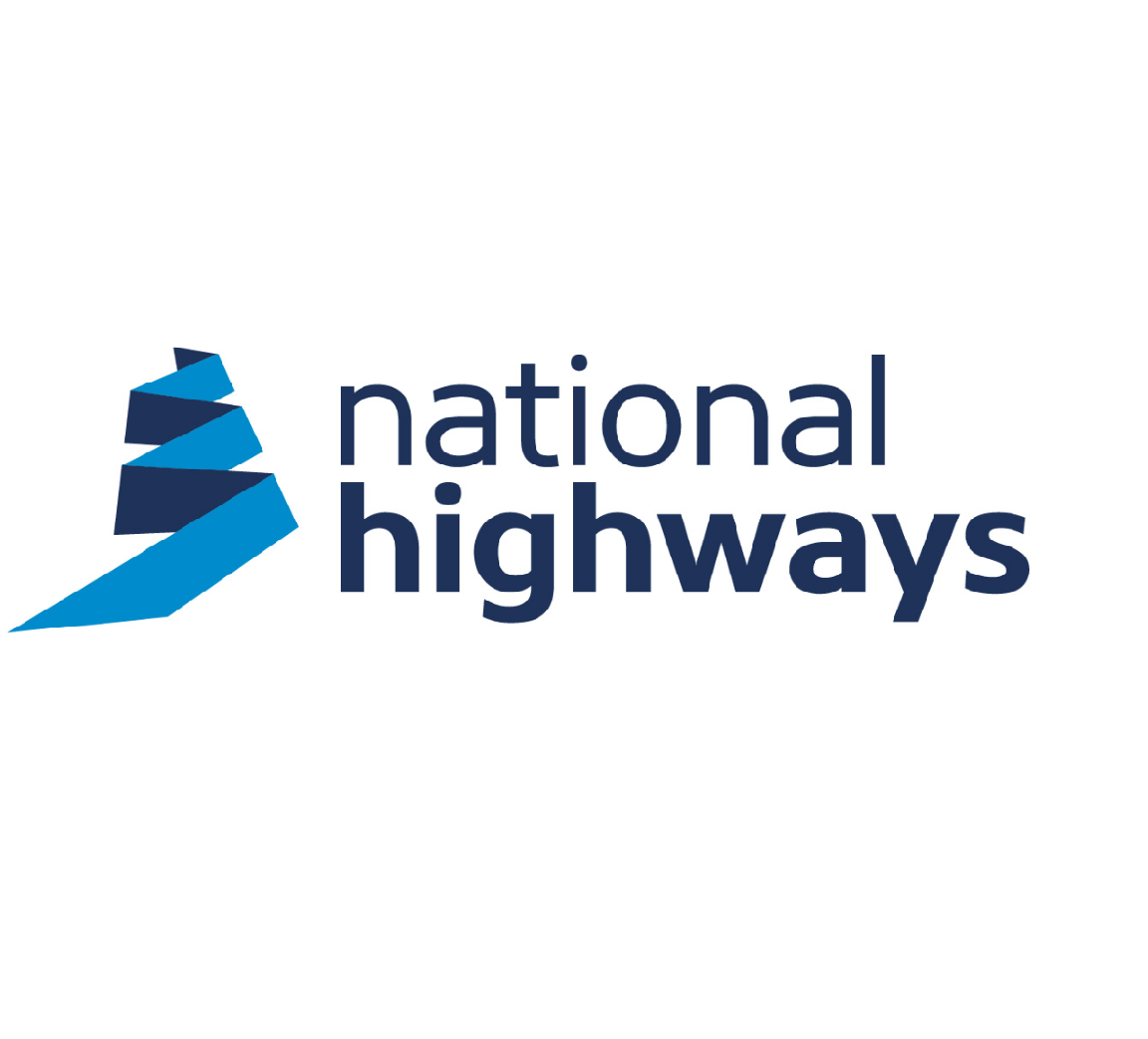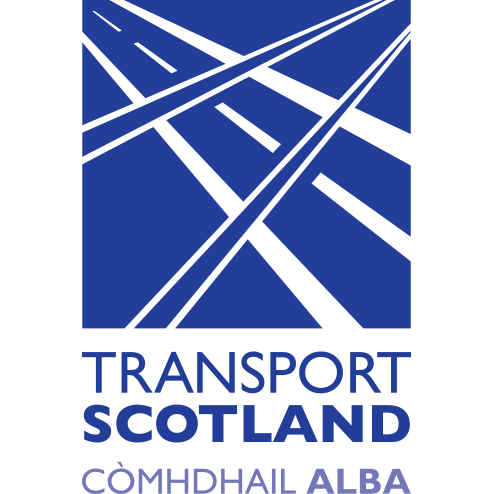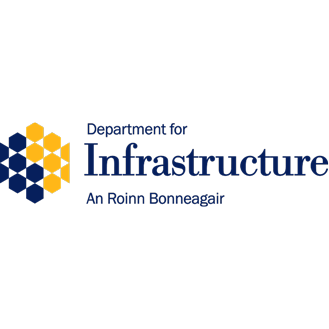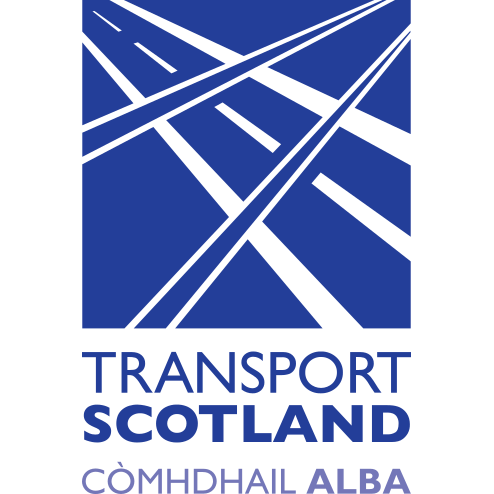Design Manual for Roads and Bridges




Control & Communications Technology
Design
TD 101 Traffic signalling systems (design)
(formerly TA 12/07, TA 16/07, TA 56/87, TA 82/99, TA 84/06, TD 07/07, TD 24/97, TD 35/06)
Version 1.1.0
Summary
This document contains design requirements for traffic signalling systems.
National Variation
This document has associated National Application Annexes providing alternative or supplementary content to that given in the core document, which is relevant to specific Overseeing Organisations. National Application Annexes are adjoined at the end of this document.
Feedback and Enquiries
Users of this document are encouraged to raise any enquiries and/or provide feedback on the content and usage of this document to the dedicated National Highways team. The email address for all enquiries and feedback is: Standards_Enquiries@highwaysengland.co.uk.
This is a controlled document.Latest release notes
| Document Code | Version number | Date of publication of relevant change | Changes made to | Type of change |
|---|---|---|---|---|
| TD 101 | 1.1.0 | August 2022 | Core document, England NAA, Northern Ireland NAA, Scotland NAA, Wales NAA | Incremental change to requirements |
| This update of TD 101 constitutes the following: rewording of several requirements to reflect agreed terminology; updated references; and updated definitions; basic grammar corrections. Also amendments to cover specific Northern Ireland legislation. | ||||
Previous versions
| Document Code | Version number | Date of publication of relevant change | Changes made to | Type of change |
|---|---|---|---|---|
| TD 101 | 1 | January 2020 | ||
| TD 101 | 0 | June 2019 |
Foreword
Publishing information
This document is published by National Highways.
This document supersedes TA 12/07, TA 16/07, TA 56/87, TA 82/99, TA 84/06, TD 07/07, TD 24/97, TD 35/06, which are withdrawn.
Contractual and legal considerations
This document forms part of the works specification. It does not purport to include all the necessary provisions of a contract. Users are responsible for applying all appropriate documents applicable to their contract.
Introduction
Background
This document contains design requirements for traffic signalling installations.
Assumptions made in the preparation of the document
The assumptions made in GG 101 [Ref 3.N] apply to this document.
It is assumed that the parties reading TD 101 are aware of additional documents to those within the DMRB; The Department for Transport (DfT) prepares general advice, some of which is applicable to motorway and all purpose trunk roads. Of these documents, the most relevant are Local Transport Notes (LTN), and Traffic Advisory Leaflets (TAL), which mostly cover topics that apply to local rather than strategic roads, but some are of general relevance.
It is assumed that a traffic signalling engineer will be part of the review process throughout all stages of traffic signalling design.
Mutual Recognition
Where there is a requirement in this document for compliance with any part of a "British Standard" or other technical specification, that requirement may be met by compliance with the Mutual Recognition clause in GG 101 [Ref 3.N].
Abbreviations
| Abbreviation | Definition |
|---|---|
| BS EN | British Standard European Norm |
| CDM | Construction, design and management |
| IET | The Institution of Engineering and Technology |
| TOPAS | Traffic Open Products and Specifications |
| TSRGD | Traffic Signs Regulations and General Directions |
| VMS | Variable message signs |
Terms and definitions
| Term | Definition |
|---|---|
| Adjacent authorities | any organisation which has responsibility for the highway control and management. NOTE: Adjacent authorities can be either borough, county or city governance. It can also include major transport infrastructure locations which have a direct links to the highway such as airports, ports, rail and freight. |
| Control strategy | a system used to control the installation. NOTE 1: Control strategy includes isolated adaptive control, co-ordinated control (such as Urban Traffic Control), cable-less linking or fixed-time. NOTE 2: An installation can be capable of operating more than one type, depending on factors such as time of day or traffic conditions. |
| Design file | a file of basic information and certification for a scheme, produced during the design process to provide a record of the development of the scheme, the decisions made and the safety considerations. |
| In-station equipment | the computer hardware located within a control room. |
| Reserve capacity | the practical reserve capacity (PRC) of a traffic signal junction. NOTE 1: The practical reserve capacity that is positive indicates that a junction has spare capacity and may be able to accept more traffic. NOTE 2: A PRC value is calculated by the commonly used traffic signal modelling software. |
| Roadside equipment | all on-street hardware to direct traffic and provide sequencing to the road users. |
| Site conditions | physical conditions of the proposed area of the schemes to be considered as part of the design stage. |
| System software | a type of computer programme that is designed to run a computer's hardware and application programmes. |
| Traffic control equipment | equipment used in connection with the signals (including the content of all instructions stored in, or executable by, that equipment). NOTE: Examples of associated equipment can include communication devices. |
| Traffic signalling engineer | a person with specialist skills, knowledge and experience for the design and commissioning of traffic signalling equipment. |
| Traffic signalling equipment | all items of hardware installations that operate together and indicate to users to proceed with safety at road traffic junctions against relevant diagrams of The Traffic Signs Regulations and General Directions 2016 UKSI 2016/362 (TSRGD) [Ref 9.N], and associated amendments, for England, Wales and Scotland, and Traffic Signs Regulations (Northern Ireland) NISR 1997/386 (TSRNI) [Ref 13.N]for Northern Ireland. |
| Traffic signalling installations | permanent traffic signalling equipment at prescribed locations as defined in The Traffic Signs Regulations and General Directions UKSI 2016/362 (TSRGD) [Ref 9.N], and associated amendments, for England, Wales and Scotland on all-purpose trunk roads, and Traffic Signs Regulations (Northern Ireland), NISR 1997/386 (TSRNI) [Ref 13.N] for Northern Ireland. For standalone crossings in Northern Ireland, such as 'Pelicans' and 'Puffins', the relevant legislation is The Zebra, Pelican and Puffin Pedestrian Crossings Regulations (Northern Ireland) 2006 NISR 2006/164 2006 [Ref 10.N]. NOTE: Examples of locations include junctions, emergency vehicle stations, level crossings, airports, tunnels, swing/movable bridges and signalised crossings. |
| Traffic signalling systems | the combination of traffic signalling equipment and/or traffic control equipment, associated software, hardware and data. |
| Vulnerable users | the user of the traffic signalling junction, the amount of protection required within the design, and the capability of those users to be able to use the traffic signalling elements. |
1. Scope
Aspects covered
1.1 This document outlines traffic signalling installation design requirements that shall be implemented on all new or modified traffic signalling installations.
Implementation
1.2 This document shall be implemented forthwith on all schemes involving traffic signalling installations on the Overseeing Organisations’ motorway and all-purpose trunk roads according to the implementation requirements of GG 101 [Ref 3.N].
Use of GG 101
1.3 The requirements contained in GG 101 [Ref 3.N] shall be followed in respect of activities covered by this document.
2. General requirements
Electrical work
2.1 All electrical work must comply with The Electricity at Work Regulations 1989 UKSI 1989/635 [Ref 7.N].
2.2 All electrical work on traffic signalling systems shall comply with the Requirements for Electrical Installations. IET Wiring Regulations, BS 7671 [Ref 5.N].
Security
2.3 Security threats to traffic signalling systems must be mitigated in accordance with the requirements of The Network and Information Systems Regulations UKSI 2018/506 [Ref 8.N].
2.4 Where evident, security threats to traffic signalling systems shall be assessed, documented, mitigated and managed.
NOTE Examples of security threats to traffic signalling systems can include compromised roadside equipment, in-station equipment, and system software.
2.5 Risk to the existing communications infrastructure by the introduction of new traffic signalling equipment shall be avoided.
2.6 A metal theft risk assessment shall be undertaken at the design stage.
2.6.1 Where a metal theft risk assessment highlights a risk, corresponding measures should be put in place to provide protection to the infrastructure against the risk of theft or damage.
Design
2.7 The design of the traffic signalling installation must meet the requirements of the TSRGD UKSI 2016/362 (TSRGD) [Ref 9.N].
2.8 The design of the traffic signalling installation shall meet the requirements of the Traffic Signs Manual Chapter 6 TSM Chapter 6 2019 [Ref 12.N].
3. General design
Design brief
3.1 The applicable provisions of the Construction (Design and Management) Regulations 2015 UKSI 2015/51 [Ref 6.N] must be complied with throughout the life-cycle of the scheme.
3.2 In order to identify and confirm the expected outcomes of the traffic signals installation(s), a consultation shall be arranged with the Overseeing Organisation.
3.2.1 As part of the consultation, the overall objectives and benefits from carrying out the traffic signalling installation should be defined.
NOTE Example objectives and benefits of a traffic signalling installation can include improved journey time reduction, customer experience, safety benefits, and accessibility.
3.3 The extent of the brief for the traffic signalling installation(s) to be undertaken shall be approved with the Overseeing Organisation and recorded.
3.4 A design file for the traffic signalling installation shall be held by the Overseeing Organisation.
NOTE The responsibilities for ownership of the design file are in line with Construction, Design and Management (CDM) regulations UKSI 2015/51 [Ref 6.N], or in Northern Ireland The Construction (Design and Management) Regulations (Northern Ireland) NISR 2016/146 [Ref 2.N] throughout the life-cycle of the scheme.
3.4.1 All aspects associated with the design and implementation process of traffic signalling installations should be agreed with the Overseeing Organisation.
NOTE Agreeing the extent of the brief with the Overseeing Organisation ensures effective planning.
3.5 Consultation with the adjacent authorities to the traffic signalling installation(s) shall be carried out.
3.5.1 The consultation with the adjacent authorities to the traffic signalling installation should agree on the following points:
- the need for the scheme;
- impact on the users and the community;
- benefits to the users and the community;
- alternative options/solutions;
- programme timescales;
- temporary works, including diversions;
- expected outcomes;
- planning consent;
- any links to the wider strategy; and,
- environmental impact.
NOTE Consultation with the adjacent authorities to the traffic signalling installation can help to achieve design and installation acceptance.
Site conditions
3.6 Site conditions shall be assessed prior to commencement of traffic signalling installation design and recorded in the design file.
3.6.1 Site conditions may be assessed by desktop study (reviewing previous reports), video surveys, site visit, ecological surveys, interview surveys, walking, cycling & horse-riding assessment and review, traffic counts and speed surveys.
3.6.2 An assessment of the surrounding environment should be performed to ensure the sensitivity of the landscape, heritage and local community are not detrimentally affected by the traffic signalling installation design.
NOTE 1 An assessment of the surrounding environment can be achieved through a desktop study of the area and a risk assessment.
NOTE 2 A video survey to review traffic and other user behaviours is an example of an assessment of the surrounding environment.
3.6.3 The compatibility of traffic control equipment with existing traffic signalling installations that are being modified should be determined.
NOTE Traffic control equipment can include bus priority systems, CCTV and variable message signs (VMS).
3.6.4 Modifications to existing traffic signalling installations, records of junction history, previous assessments and any known issues should be reviewed.
Control strategy
3.7 The traffic signalling installation design shall define a control strategy.
3.7.1 To determine the optimal control strategy, location of the site, other existing signals, road speed and junction type should be assessed by undertaking appropriate modelling.
3.7.2 Determination of the optimal control strategy may be discussed with the Overseeing Organisation.
3.7.3 The chosen control strategy should take into account the compatibility with existing traffic signalling equipment in order to optimise functionality and performance.
3.8 The detection method shall be selected as part of the traffic signalling system design.
NOTE 1 The accessibility of the site and the chosen detection method can have an impact on the safety of the maintenance operatives.
NOTE 2 Site conditions, such as adjacent vegetation growth, can impact on the chosen detection method.
NOTE 3 Detection methods can be below or above ground.
Reserve capacity
3.9 Overall junction reserve capacity shall be a contributing factor for the chosen control strategy at the design stage to allow for future additional use.
3.9.1 The potential reserve capacity provided in the chosen control strategy should be based upon local knowledge at the design stage.
NOTE Known and planned future developments and improvement schemes can impact on reserve capacity.
Design for maintenance and inspection
3.10 The traffic signalling installation design shall promote and enable safe site maintenance and inspection.
NOTE 1 The maintenance and inspection requirements can inform the design of the traffic signalling installation.
NOTE 2 The regimes of equipment manufacturers can be used to inform the design of the traffic signalling installation.
Equipment
3.11 Traffic signalling equipment shall be in accordance with the Traffic Open Products And Specifications (TOPAS) requirements TOPAS [Ref 11.N].
NOTE Traffic signal displays, road markings and variable message signs, in legal terms, are ‘traffic signs’ and subject to the UKSI 2016/362 (TSRGD) [Ref 9.N].
3.12 Traffic signalling equipment shall be selected to maintain performance, in accordance with equipment specifications, throughout its life-cycle.
3.12.1 Maintenance schedules should be assessed to ensure the performance of the traffic signalling equipment is suitable for the environment in which it is installed.
3.13 The components of the traffic signalling equipment shall be compatible with the traffic control equipment for each installation.
3.13.1 For modifications to existing installations, new traffic signalling equipment should be compatible with the existing installation.
Traffic signal interaction with walkers, cyclists and horse-riders
3.14 Traffic signalling installations with pedestrian facilities must be designed to make provision for disabilities and specific age groups (elderly and children) in accordance with the Public Sector Equality Duty in the UKPGA 2010/15 Clause 149 [Ref 1.N]. In Northern Ireland the equivalent legislation is Section 75 (Statutory duty on public authorities) of Part VII (Equality of opportunity) of the Northern Ireland Act 1998 UKPGA 1998/47 [Ref 4.N]
3.15 An assessment shall be made at the design stage as to whether the interaction of the traffic signalling installation with walkers, cyclists and horse-riders is needed.
3.16 Where the interaction of walkers, cyclists and horse-riders affects the traffic signalling installation, the requirements of GG 142 [Ref 14.N] shall be met.
NOTE Traffic signalling installation measures to make provision for disabilities and specific age groups can include tactile indicators, audible signals, dropped kerbs and tactile paving.
Connection to public transport systems
3.17 Public transport systems that have an impact, or can be impacted, by the traffic signal installation shall be identified for integration to the system at the design stage.
3.17.1 The integration of the traffic signalling system to public transport systems should include priority measure, location and access to boarding.
Remote monitoring
3.18 All traffic signalling installations shall include a method of remote monitoring.
3.19 The traffic signalling installations shall enable the Overseeing Organisation to remotely monitor the status of the installation.
3.20 The chosen method of remote monitoring the traffic signalling installation shall allow operational and fault reporting to be achieved.
NOTE Operational and fault reporting of the traffic signalling installation can be achieved via mobile or fixed communication connection.
Passive safety
3.21 The need for any passive safety elements within the traffic signalling installation, including any electrical isolation system, shall be reviewed at the design stage.
3.21.1 The risk factor for passive safety elements, based on severity and likelihood, should take into account the traffic signalling installation aspect arrangements and the wind speed for the area.
4. Normative references
The following documents, in whole or in part, are normative references for this document and are indispensable for its application. For dated references, only the edition cited applies. For undated references, the latest edition of the referenced document (including any amendments) applies.
| Ref. | Document |
|---|---|
| Ref 1.N | The National Archives. legislation.co.uk. UKPGA 2010/15 Clause 149, 'Equality Act 2010. Public Sector Duty (Clause 149) ' |
| Ref 2.N | National Archives. NISR 2016/146, 'Health and Safety - The Construction (Design and Management) Regulations (Northern Ireland)' |
| Ref 3.N | National Highways. GG 101, 'Introduction to the Design Manual for Roads and Bridges' |
| Ref 4.N | National Archives. UKPGA 1998/47, 'Northern Ireland Act' |
| Ref 5.N | BSI. BS 7671, 'Requirements for Electrical Installations. IET Regulations' |
| Ref 6.N | National Archives. UKSI 2015/51, 'The Construction (Design and Management) Regulations' |
| Ref 7.N | National Archives. UKSI 1989/635, 'The Electricity at Work Regulations' |
| Ref 8.N | National Archive. UKSI 2018/506, 'The Network and Information Systems Regulations' |
| Ref 9.N | National Archive. UKSI 2016/362 (TSRGD), 'The Traffic Signs Regulations and General Directions' |
| Ref 10.N | National Archives. NISR 2006/164, 'The Zebra, Pelican and Puffin Pedestrian Crossings Regulations (Northern Ireland) 2006' , 2006 |
| Ref 11.N | Traffic Products and Open Specifications (TOPAS) Ltd. www.topasgroup.org.uk. TOPAS, 'Traffic Open Products and Specifications' |
| Ref 12.N | TSO. TSM Chapter 6, 'Traffic Signs Manual Chapter 6 - Traffic Control' , 2019 |
| Ref 13.N | National Archives. NISR 1997/386 (TSRNI), 'Traffic Signs Regulations (Northern Ireland)' |
| Ref 14.N | National Highways. GG 142, 'Walking, cycling and horse-riding assessment and review' |


